1. Geographical environment and climate
Cambodia’s full name is Kingdom of Cambodia, commonly known as Cambodia, formerly known as Khmer, located on the Indochina Peninsula, bordering Thailand in the west and northwest, bordering Laos in the northeast, bordering Vietnam in the east and southeast, and facing the Gulf of Siam in the south . The territory of Cambodia is a dish-shaped basin, surrounded by hills and mountains on three sides, and the middle is a vast and rich plain, accounting for more than three-quarters of the country. The territory has the Mekong River and Southeast Asia's largest freshwater lake-Tonle Sap Lake (also known as Phnom Penh Lake), the capital Phnom Penh. Cambodia is a member of the Association of Southeast Asian Nations. Its economy is dominated by agriculture and its industrial base is weak and poor. It is one of the least developed countries in the world.
Geographical environment and climate: Cambodia is located in the southwest of Indochina Peninsula, covering 181,035 square kilometers, 20% of which is agricultural land. The southernmost region to the west of the country is located in the tropical region. The northern side is bordered by the Pampangan Mountains and Korat in Thailand. The Ratanakiri Platform and the Chhlong Highland on the east are adjacent to the Central Highland of Vietnam. To the west is a narrow coastal plain: Sihanoukville facing the Gulf of Siam. The Biandan Mountain Range is located on the northern side of the Tonle Sap Basin and is formed by the steep cliffs of the southern part of the Korat Plateau in Thailand. It is the border between Thailand and Cambodia.
Cambodia has a tropical monsoon climate, with an average annual temperature of 29-30°C, a rainy season from May to October, and a dry season from November to April of the following year. Affected by the terrain and monsoon, precipitation varies greatly from place to place. The southern end of Xiangshan Mountain can reach 5400 mm. About 1,000 mm east of Phnom Penh.

2. Natural resources
Cambodia’s mineral deposits are mainly gold, phosphates, precious stones and petroleum, as well as a small amount of iron and coal. Forestry, fishery and fruit trees are rich in resources. Rich in teak, iron wood, red sandalwood, ebony, white Mao and other tropical forest trees, and there are many kinds of bamboo. The forest coverage rate is 61.4%, mainly distributed in the mountainous areas in the east, north and west. The wood reserves are about 1.1 billion cubic meters. Tonle Sap Lake is the largest natural freshwater fishing ground in Southeast Asia and is known as the "fish lake". The southwest coast is also an important fishing ground, producing fish and shrimp.
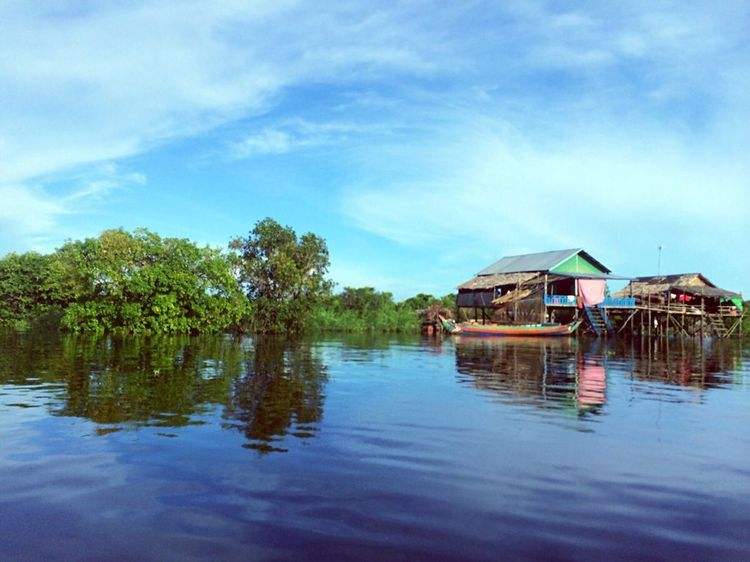
▲ Tonle Sap Lake
3. National population
There are more than 20 ethnic groups in Cambodia, including the Khmer ethnic group as the main ethnic group, accounting for 80% of the total population, as well as ethnic minorities such as the Zhan, Punong, Lao, Thai and Steen ethnic groups. At the end of 2018, Cambodia had a population of 16.25 million, of which about 1 million were Chinese in Cambodia. The geographical distribution of the population is very uneven, and the residents are mainly concentrated in the central plains. Phnom Penh and its surrounding economically developed provinces are the most densely populated, with a population of more than 2 million.
Since 1995, Cambodia's population growth rate has ranged from 1.5% to 3.0%. The proportion of the population under 15 years of age is 32.2%. The population structure is relatively young. The population of the country is expected to reach 18 million by 2025.

▲Cambodian street
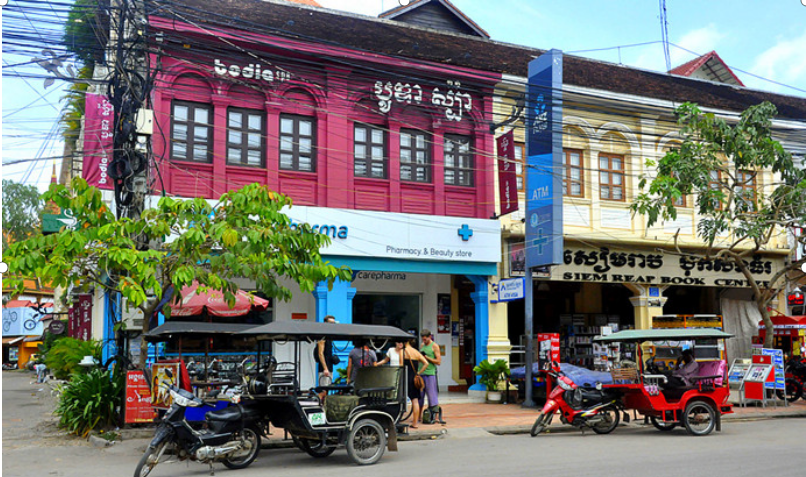
▲Cambodian street
4. National Symbol
The national flag of Cambodia is mainly red, blue and white, and the white hall in the middle is Angkor Wat. It is surrounded by red and blue bars (line ratio 1:2:1) Red represents the nation, white represents Buddhism, and blue represents the royal family. It is in line with the national motto of Cambodia, "Nation, Religion, King".
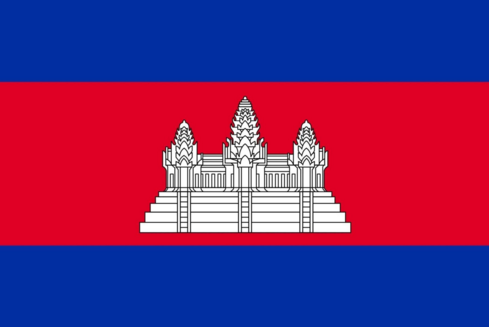
▲ Cambodian flag
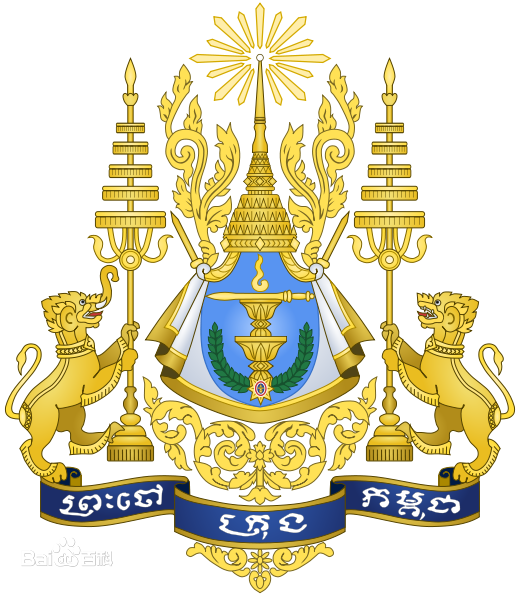
▲ Cambodian national emblem
V. Political system
The Constitution stipulates that Cambodia's state system is a constitutional monarchy, a free democracy and a free market economy, and the separation of powers between legislation, administration and justice. The king is the symbol of the lifelong head of state, the supreme commander of the armed forces, national unity and permanence. He has the right to declare an amnesty and to dissolve the parliament after the prime minister has proposed and obtained the consent of the president of the parliament. When the king is unable to govern or is not in the country, the chairman of the Senate acts as the head of state. After the king's death, a throne committee consisting of the Prime Minister, two Buddhist monks, the Senate, and the chairman and deputy chairman of the Congress selected a new king from the three descendants of Anton, Norodom and Sisova within seven days. The Parliament is the highest authority and legislative body of the Cambodian State, with a term of 5 years. The current king is Norodom Sihamoni who took the throne on October 29, 2004. Hun Sen, Prime Minister and Vice Chairman of the People's Party. The main political parties in Cambodia are the People’s Party and the Fengxin Bik Party. The National Salvation Party, one of the original main political parties in Cambodia, was disbanded in 2017. The People’s Party has long been in full control of legislative, judicial and administrative powers. Since Prime Minister Hun Sen took office, he has paid attention to people’s livelihood and vigorously developed the economy, so that the domestic political situation has remained stable and social security is in good condition.
6. Economic System
Cambodia is a traditional agricultural country, and the poor population accounts for 28% of the total population. The Cambodian government implements a free market economy open to the outside world, promotes economic privatization and trade liberalization, and takes economic development and poverty eradication as its primary tasks. Taking agriculture, processing industry, tourism, infrastructure construction and personnel training as priority areas for development, we will promote administrative, financial, military, and judicial reforms, improve government efficiency, and improve the investment environment, with certain results.
Cambodia’s economic and social development is relatively backward, with a low starting point for infrastructure, education, medical care, and agriculture, and the country’s economic strength is relatively weak. Calculated in current US dollars, Cambodia's GDP in 2018 was 23.9 billion US dollars, with a growth rate of 7.3%, and the per capita GDP was about 1460 US dollars. Based on the 2010 constant price published by the World Bank, its total GDP in 2018 was 19.5 billion US dollars, and its per capita GDP was about 1,200 US dollars. Its economic development level is roughly equivalent to that of China from 1994 to 1995. Under the leadership of the Hun Sen government, Cambodia maintains a stable political and economic environment, actively integrates into regional and subregional cooperation, focuses on the construction of soft and hard facilities in regional connectivity plans, and increases investment attraction, especially in the private sector, in participating in national construction. "Carriage" (agriculture, textile and construction-led industry, tourism, and foreign direct investment) spurs steady economic development. After 2010, Cambodia's economic growth rate has reached or exceeded 7% for many years in a row, and the growth momentum is good. It is expected that the economic growth in 2019 will remain at around 7%. Based on the per capita GDP level, the World Bank announced that from July 1, 2016, Cambodia will officially leave the least developed countries (LDC) and enter the ranks of lower middle income countries.
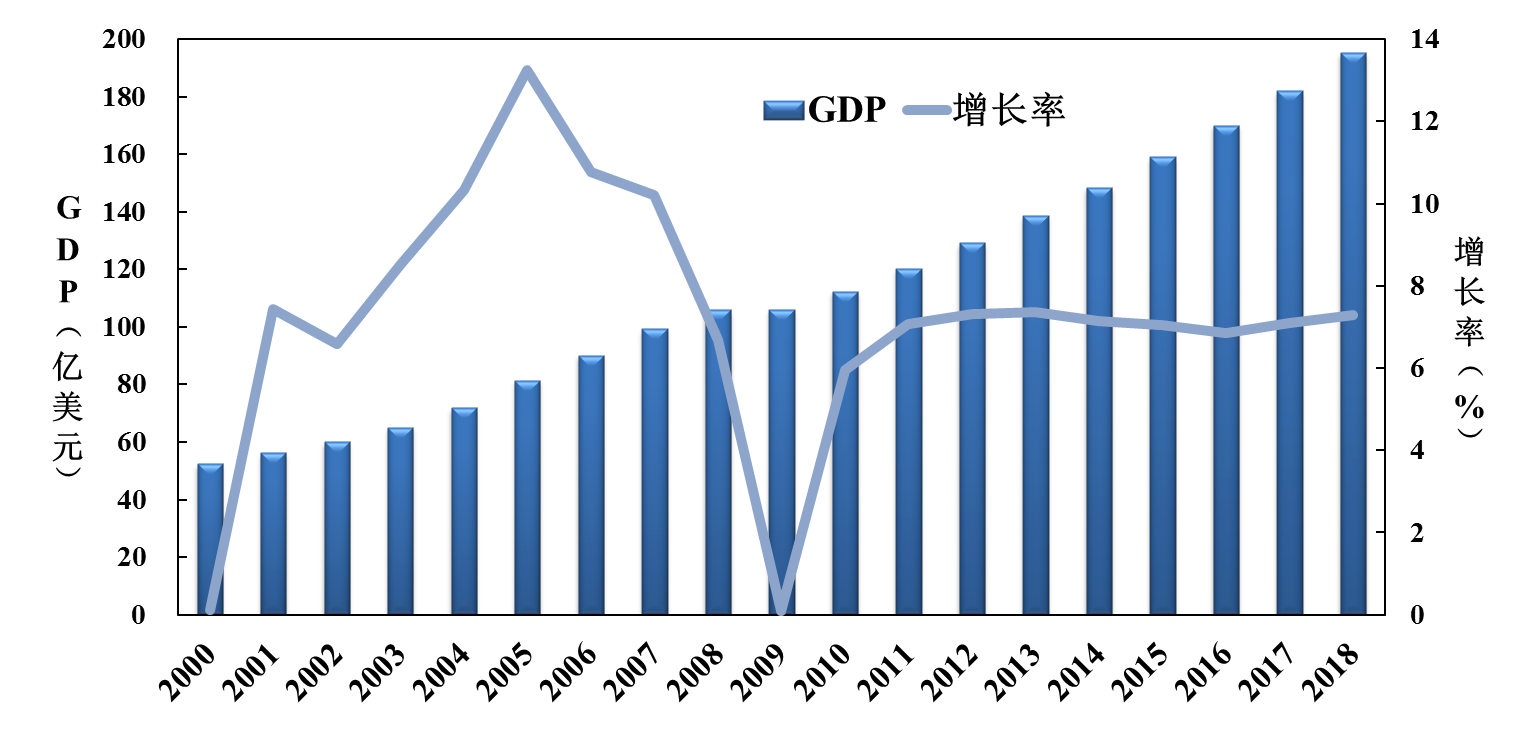
▲Note: The data comes from the World Bank database
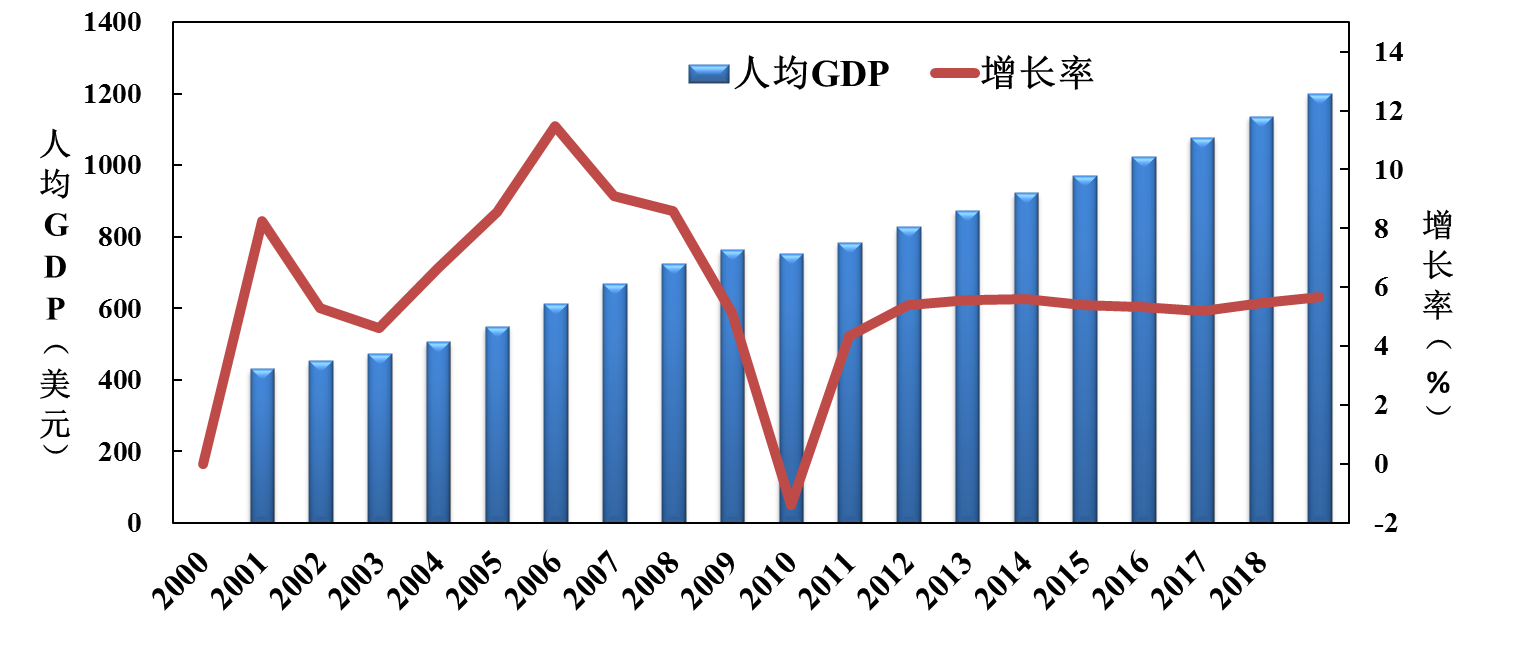
▲ Note: The data comes from the World Bank database
7. Political and social environment
Cambodia implements a democratic management system, and domestic political stability gives equal treatment to foreign and domestic investment. Approved investment projects. The government does not control its products and prices. The domestic political environment: the implementation of a constitutional monarchy, the separation of powers between legislation, administration and justice. The national legislature is a bicameral system composed of Congress and the Senate. Since Prime Minister Hun Sen took office, he has paid attention to democracy and vigorously developed the economy to keep the domestic political situation stable and the public security in good condition. Over 90% of Cambodian nationals practice Buddhism, with simple folk customs and mild temperament.
Cambodia has experienced more than 20 years of war, civil unrest and unrest in the 1970s and 1980s. After the restoration of the constitutional monarchy in 1993, Cambodia implemented a multi-party system and a national governance system with separate legislative, judicial and administrative powers. Emerging developing countries with good social order and rapid national economic growth. The current (fifth) Kingdom Government was established in July 2013, with Hun Sen as the Prime Minister, and established the Ministry of Cabinet Affairs, the Ministry of the Interior, the Ministry of National Defense, the Ministry of Foreign Affairs and International Cooperation, the Ministry of Finance, the Ministry of Agriculture, Forestry and Fisheries, the Ministry of Rural Development, the Commercial Ministry of Industry, Ministry of Industry and Handicrafts, Ministry of Mines and Energy, 28 departments and one State Secretariat.
The current Royal Government is committed to promoting the "Four Corners Strategy", focusing on the implementation of the "Government Action Plan" to combat corruption, promote judicial and legal system reform, administrative reform (including decentralization of administrative power and decentralization), and military reform (especially It is a disarmament plan) and other four interconnected reforms to improve social and administrative efficiency, ensure social and economic fairness, justice and sustainable development, and maintain a peaceful and stable political environment in the country. Since Prime Minister Hun Sen took office, he has paid attention to people's livelihood and vigorously developed the economy, so that the domestic political situation has remained stable and social security is in good condition.
Cambodia has formulated relevant laws and regulations on the basis of encouraging foreign investment. According to the "Investment Law", all investors, irrespective of nationality and race, are equal in law except for the land ownership provisions of the Constitution of the Kingdom of Cambodia. Foreign direct investment can enjoy national treatment in other respects; the Royal Government does not Implement a nationalization policy that harms the interests of investors; the Royal Government does not control the prices of its products and services for approved projects; the fields available for investment are also very wide. The current "Investment Law" also stipulates that investors who have obtained the final registration certificate can enjoy various preferential policies. Prime Minister Hun Sen also expressed that Cambodia welcomes investment from all countries in the world at various international conferences, such as providing free assistance, providing preferential loans, and encouraging investment in Cambodia, and investing in Cambodia.
At the same time, Cambodia is also committed to developing investment facilitation services. In 2005, the Cambodian Government established the Cambodian Special Economic Zone Committee under the Cambodian Development Council to promote the construction of special economic zones. Under the management of the special economic zone committee, each approved special economic zone has a management committee to provide one-stop services from investment project registration to conventional export licensing for investors in the zone; "2015-2025 Industrial Development Plan" It is proposed to continue to strengthen the administrative capacity of the management institutions and streamline the institutional structure of the management institutions, support industrial development by strengthening the single window service mechanism and industrial policy implementation mechanism, promote trade facilitation and improve the investment and business environment; the Four Corners Strategy also There are clear regulations on strengthening public and corporate governance, improving trade facilitation, and improving the investment environment. It is necessary to implement economic integration policies to integrate Cambodia into the regional and world economy; improve the legal framework for enterprise development, including laws, regulations, and institutional capacity building In order to facilitate business, trade and private investment, especially to establish a fair competition, transparency and high credibility partnership between the private and public sectors.
8. International Political Environment
Cambodia is a friendly neighbor of China. China and Cambodia have traditional friendship. There have been no sovereignty disputes and ethnic conflicts in history. For a long time, the friendly exchanges between generations of Chinese leaders and Prince Sihanouk have continuously enhanced the people of the two countries. Deep friendship. In recent years, Cambodia has actively participated in China's "Belt and Road" initiative, and China-Cambodia cooperation has become closer and the results have become more prominent. The Kingdom of Cambodia looks forward to investment by Chinese companies and provides Chinese citizens with visa-free, electronic and visa-free access to Cambodia. The Cambodian Constitution provides for a policy of permanent neutrality and non-alignment, peaceful coexistence with neighboring countries and other countries in the world, no aggression in any country, or direct or indirect interference in the internal affairs of any other country, settlement of all issues on the basis of mutual benefit, and stable international relations. It advocates mutual respect for national sovereignty and the settlement of border issues and disputes between neighboring countries through peaceful negotiations.
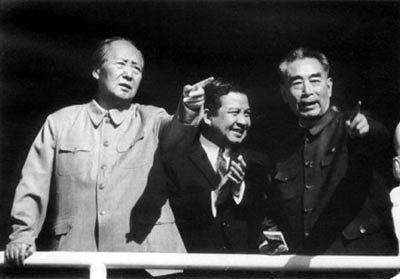
▲Left: Mao Zedong (left), Zhou Enlai (right) and Prince Sihanouk (middle) at the Tiananmen Gate in May 1970

▲Right: President Xi Jinping held talks with Cambodian Prime Minister Hun Sen in Phnom Penh on October 13, 2016
So far, Cambodia has established diplomatic relations with 107 countries. Cambodia officially joined ASEAN in 1999, relying on ASEAN, and actively developed relations with neighboring countries, Western developed countries and international organizations. Table 2-1 shows the international organizations that have accepted Cambodia as a member. In addition, Cambodia is also a member of organizations such as the World Food and Agriculture Organization, the International Monetary Fund, Interpol, the United Nations Conference on Trade and Development, UNESCO, the United Nations Industrial Development Organization, and the World Health Organization.
Table 2-1 Major international organizations that Cambodia has joined
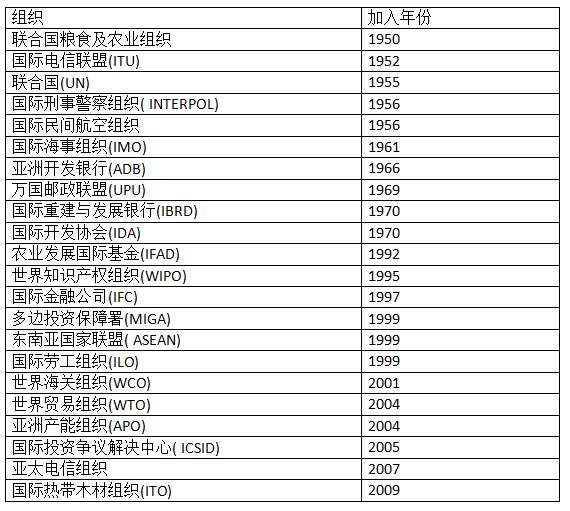
▲ Source: Ministry of Foreign Affairs and International Cooperation of Cambodia
9. Social market environment
(1) At the initial stage of development, full of business opportunities
As a carrier for industrialization and urbanization, industrial parks play an important role in local economic and social development. Cambodian industry is regarded as one of the pillars to promote the domestic economic development of Cambodia, but the foundation is weak and the categories are monotonous. Since the implementation of the free market economy at the end of 1991, state-owned enterprises have been leased and operated by domestic and foreign private companies. The industrial sector creates jobs for 500,000 Cambodian nationals. In 2015, a total of 160 industrial enterprises were registered with the Ministry of Industry and Handicrafts. The total number of enterprises reached 1,450, creating a total of 895,500 jobs, and the total industrial output value reached 8.873 billion US dollars. Among them, the clothing and footwear industry added 72 new projects, the number of enterprises reached 1,007, an increase of 10% year-on-year, created 754,200 jobs, an increase of 10.4% year-on-year, and exports reached US$7.17 billion, an increase of 18% year-on-year. The EU is still the most important export market for the Cambodian clothing and footwear industry. Cambodia’s total exports to the EU reached US$3.27 billion throughout the year, an increase of 39%, accounting for 45.6%;
Infrastructure investment doubled. Throughout the year, the Cambodian government approved a total of 2,305 construction projects, a year-on-year increase of 17.6%, including 184 large-scale projects, with a construction area of 7.686 million square meters, an increase of 18.98%; a total investment of 3.338 billion US dollars, an increase of 33.14%, which reversed the previous year’s investment decline of 10 % Situation; created a total of 208,300-25,150 job opportunities. Foreign investors are mainly from South Korea, China, Malaysia and Vietnam, and the construction sites are mainly located in the capital city of Phnom Penh, Siem Reap and Sihanoukville.
Kampot China-Cambodia (Thailand) Special Economic Zone mainly uses the building materials needed for the development of Cambodia's industrialization to locate its functions, which greatly meets the related domestic needs of Cambodia, provides protection for Cambodia's infrastructure, and has great development prospects.
Cambodia is an emerging country with unlimited business opportunities. It has abundant labor resources, low costs, and a minimum wage of $182. Since Prime Minister Hun Sen took office, the domestic political situation has been stable and the economy has been vigorously developed. All industries have been opened to the outside world to encourage foreign investment. In 2004, Cambodia joined the WTO and is one of the countries with the highest economic freedom in the world. Cambodia can also enjoy special trade preferential policies and additional tariff reduction and exemption granted by developed countries such as Europe and the United States.
(2) The market is highly liberalized
According to the 2006 American Heritage Foundation report, Cambodia's Economic Freedom Index ranks 9th among 32 Asian countries, second only to Singapore among the 10 ASEAN countries.
(3) Large market demand
After investigating major Cambodian cities and regions, and investigating local market construction materials (especially cement, construction steel, glass, etc.), and comparatively analyzing the prices and varieties of supply and sales, Cambodia’s industrial foundation is thin, and construction materials cannot be self-sufficient. Transportation The living conditions of roads, urban buildings and private buildings are poor. It takes many years of hard work to completely improve. It is a pure developing country, and it is relatively backward in Asia. Cambodia has a huge demand for building materials products.
10. Policy environment for foreign investment
Cambodia does not implement foreign exchange control, allows foreign exchange funds to enter and exit freely, and the US dollar can be circulated freely in the market. Most industries are open to foreign investors, and it is one of the countries with the highest economic freedom in the world. According to the "2009 Economic Freedom Index" of the American Heritage Foundation, Cambodia ranks 21st among 41 countries in the Asia-Pacific region. Cambodia scores significantly in terms of financial freedom and government scale, and also scores in financial freedom. Due to the lower income tax and corporate tax, Cambodia's overall tax burden is lower. The administrative examination and approval procedures are convenient, and can be registered in different business organizations such as individuals, partnerships, and companies. It is not subject to nationality restrictions, has low registered capital, and has a convenient approval process and a short cycle.
The Cambodian government encourages foreign investment and has issued a series of regulations and established regular consultation and dialogue mechanisms with investors. In 2015, the total national investment reached US$4.644 billion, an increase of 18% year-on-year, of which domestic investment was US$3.217 billion, accounting for 69.3% of the total investment, and foreign direct investment was US$1.473 billion, accounting for 30.7%. Among them, China invested 865 million US dollars in Cambodia, ranking first in the country of Cambodia's foreign source, accounting for 18.62% of Cambodia's total investment, which is 6.5% more than all other countries' total investment in Cambodia.
In 1994, the Cambodian Parliament passed an investment law in accordance with the relevant provisions of the Cambodian Investment Law: Except for the land ownership provisions in the Constitution of the Kingdom of Cambodia, all investors, regardless of nationality and race, are equal in law; the Royal Government does not impose damage The nationalization policy for the interests of investors; for the approved projects, the Royal Government does not control the prices of its products and services. Cambodia’s labor resources are abundant and cheap, and it is highly competitive in the Southeast Asian market. Cambodia’s workforce has a population of 7.5 million, with an annual growth rate of 2.7%, and more than 200,000 new labors are added each year.
11. Legal Protection
The implemented "Kingdom of Cambodia Investment Law" protects investors' investment interests in Cambodia and establishes a special agency to simplify the procedures for investors to handle product import and export.
12. Trade Environment
Without any trade barriers and anti-dumping, products of Cambodian origin can enter the EU market with zero tariffs and enter the US and Japan markets with inclusive tariffs. Products of Cambodian origin can enter the ASEAN 10+6 markets with zero tariffs. Cambodia joined the WTO in 2004. As one of the least developed countries in the world, Cambodia has not yet encountered obstacles such as the “dual-reverse” trade barriers of developed countries, and can enjoy special trade preferential policies and additional tariff reductions and exemptions granted by developed countries such as Europe and the United States.
On January 1, 2011, the European Union announced the launch of the new GSP, and continued to give the most preferential treatment to the products of 49 least developed countries including Cambodia. In addition, the EU’s new GSP has once again relaxed the regulations to Cambodia. The most important condition is that the EU no longer restricts the source of fabrics, and allows ready-made products produced in Cambodia and other countries to use fabrics made in any country and you can enjoy Tariff-free preferential access to the EU market. As a member of ASEAN, Cambodia has joined the market of nearly 600 million people in ten countries. On January 1, 2010, the complete establishment of the China-ASEAN Free Trade Area provided strategic opportunities for Chinese enterprises to enter the ASEAN countries. In addition, ASEAN is about to establish a free trade zone with South Korea, Japan, India, New Zealand, Australia, and invest in Cambodia. Enterprises will also have a large ASEAN 10+6 zero tariff market.
13. Land Policy
The land can be leased for a long period of time, with a maximum period of 99 years. The lease can be applied for renewal at the end of the period.
14. Production and living environment in the special zone
The project construction has won the support and approval of the state and the Fujian Provincial People's Government, and enterprises entering the park can obtain the following preferential conditions:
①Apply for the national “going out” special fund support;
②Special guidance funds for "going out" of various provinces and cities;
③ The National Credit Insurance Company can provide business risk insurance to reduce business risk.
The Kampot China-Cambodia (Thai Wenlong) Industrial Special Economic Zone has advantages over other similar industrial parks due to its location and locational advantages. Therefore, some related supporting enterprises will consider entering the Kampot China-Cambodia (Thailand Long) Industrial Special Economic Zone due to factors such as land prices and government preferential policies. The logistics park's "one park and two zones" functional layout plan greatly enhances the attraction of Kampot China-Cambodia (Thai Wenlong) Industrial Special Economic Zone to investors. Under the conditions of large-scale social production, in order to ensure the effective link of the input-output chain, From the huge throughput of production materials to the final product, the economic configuration of the supply, production and sale of enterprise products requires the efficient cooperation of the logistics industry. The perfect service industry such as internal logistics and warehousing in the park, as well as the logistics and transportation network of raw materials and market areas and development zones, has great appeal to investors.
At present, Cambodia has a good industrial background both at home and abroad. Kampot China-Cambodia (Thailand) industrial special economic zone has a promising market demand and a large market potential. It takes full advantage of Cambodia’s location and resources to build Kampot China-Cambodia (Thailand). Industrial special economic zones, creating competitive industrial parks and turning them into open gardens, green gardens, civilized gardens, and harmonious gardens are important demonstrations for China, especially Fujian Province, to adjust and optimize its economic structure and transform its development mode.
At present, Cambodia has become the first place for international industrial transfer, and is rapidly forming the center of world manufacturing. With the acceleration of the transfer of world manufacturing centers to Cambodia, standard industrial plants and modern logistics houses will be in short supply. (Thai Wenlong) The development of industrial special economic zones brings rare opportunities.
 简体中文
简体中文  English
English  ភាសាខ្មែរ
ភាសាខ្មែរ

